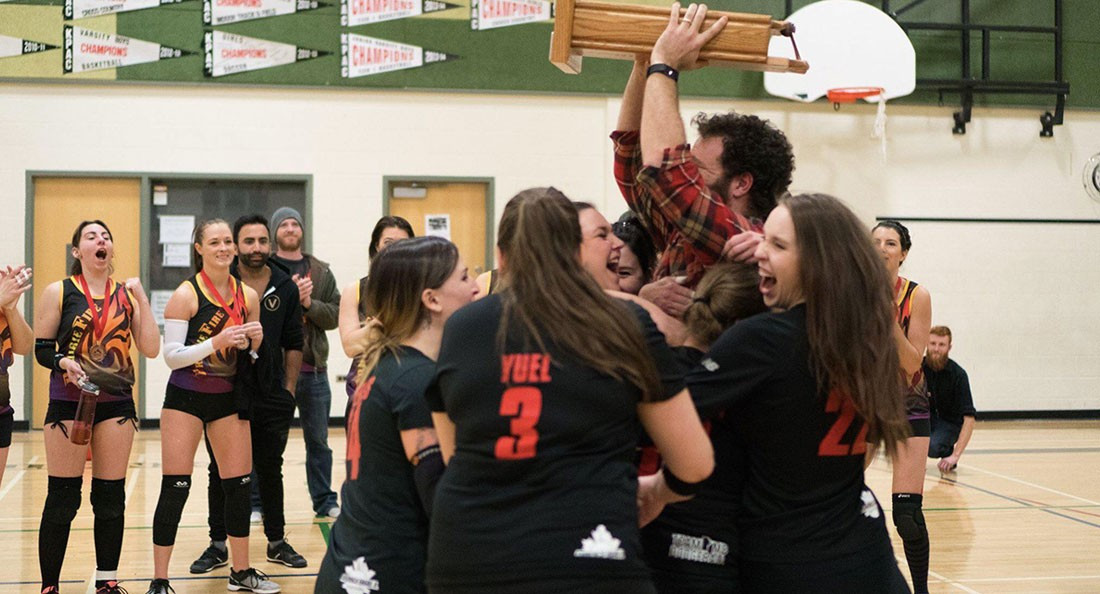Dodgeball athletes defy gendered assumptions
Women gain ball control in Manitoban dodgeball leagues
Lower-level dodgeball teams in Manitoba are co-ed and require a minimum of two female players on the court at all times.
Phoebe Greywood, who has been playing competitive dodgeball since 2015, explains that this rule is intended to even out the competition. Traditionally, there are different roles assigned based on gender: players categorized as men tend to play in offensive positions, whereas those categorized as women tend to play in defensive positions.
However, these strict roles are restrictive to the athletic development of female players.
“What happens in co-ed play quite a bit is that, because women are considered the placeholders, they won’t be given the option to throw the ball a lot,” Greywood says.
Greywood’s favorite aspect of the game is the strategy. She says that “ball control” is the most important strategic factor for a team.
Greywood explains that the team tries to maintain ball control through guard positions, by holding as many balls as possible while protecting their throwers, in order to be able to throw many at the same time.
At provincial and national levels, competitive dodgeball teams in Manitoba are gender-segregated. The courts are different sizes: for women, they’re a few feet shorter. This can become a problem when it comes to developing strength and throwing speed, as well as throwing distance.
Greywood explains that many women who reach a higher level are coming from the perspective that they must play a slower, more strategic game in these defensive positions. This habit hinders the offensive play style required of a team.
“In the future, I would really like to see the female court being lengthened, just because with the female development, I believe that we do have the potential to play on larger courts without it being an issue,” Greywood says.
“I like the potential for growth (in dodgeball). It’s easy to recognize where we’re failing and where we’re succeeding, and to work on that and actually improve,” she says.
For instance, Greywood’s draft league team uses a radar gun at practice to measure the strength of their throws.
Guylaine San Filippo recently played for Team Canada and is currently on the board for Dodgeball Manitoba, where she organizes workshops with a focus on female player development. Her workshops have helped players like Greywood hone their skills to overcome the popular assumption that women are weaker throwers, Greywood says.
Abraham Laureano started playing competitive dodgeball about five years ago.
“I wasn’t the most athletically-inclined person growing up, so dodgeball was something that was fun and that you didn’t need to be super athletic to do,” he says.
Although competitive dodgeball is much more athletically demanding than the game played in grade school, Laureano says it still maintains that element of fun.
Laureano enjoys having female players on the team and admits that typical gendered roles do not always apply.
“There are a ton of talented women who … throw harder and are better catchers than I am,” he says.
Greywood believes that the more people become interested in the sport, the more skill will be shared with the community and the more the community will benefit as a whole.
Published in Volume 72, Number 16 of The Uniter (February 1, 2018)







